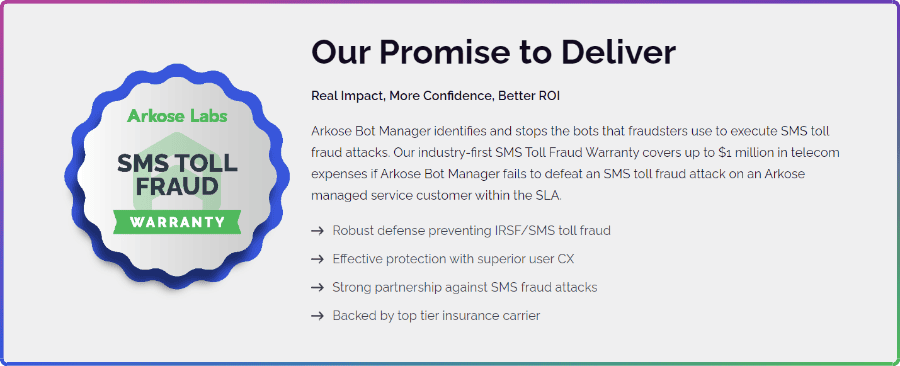What is SMS pumping?
SMS pumping is a type of fraud where scammers exploit auto-reply messages from businesses to generate high volumes of messages, resulting in excessive charges. This can lead to significant financial losses and disrupt normal communication services.
This page explains how businesses can block SMS pumping. Looking for information on its inner workings? See SMS Pumping Fraud: How to Spot and Stop It.
Understanding the Concept of SMS Pumping
SMS pumping involves the unauthorized sending of a large volume of text messages for fraudulent purposes. In this type of toll fraud, scammers collaborate with mobile network operators to generate revenue from text messages sent to premium-rate numbers. By exploiting vulnerabilities in the system, malicious actors can manipulate and exploit unsuspecting businesses, resulting in high charges to premium rate numbers from a range of numbers controlled by specific mobile network operators., with the fraudsters receiving a share of the generated revenue. This type of attack can occur through various channels, including online forms and web apps, making it crucial for businesses to have detection measures in place.
This type of fraud can have a significant impact, affecting business operations and potentially leading to financial losses. By understanding the concept of SMS pumping, businesses can take proactive measures to detect and prevent this type of fraudulent activity.
How SMS Pumping Works
Let's dive into the inner workings of an SMS pumping fraud operation. While this deceitful practice takes on various forms, the following provides a general overview of how such schemes typically unfold.
- Identifying System Weaknesses: Cybercriminals target vulnerabilities in the telecommunications infrastructure, such as lax security configurations or gaps in account registration processes.
- Crafting Bogus Profiles: Perpetrators employ tactics like automated bots or scripts to fabricate fake profiles that may initially appear legitimate.
- Tapping into Premium Numbers: Fraudsters secure access to premium-rate numbers or premium-service numbers facilitated by telecom carriers. These numbers incur higher charges for calls or texts, with a percentage of fees directed to the carrier.
- Initiating Unauthorized Communication: Once the fraudulent profiles are established, the attackers unleash a torrent of calls or text messages towards these premium numbers.
- Gaining Illicit Profits: The fraudulent activity leads to financial gain for the wrongdoers, who earn a share of the charges incurred. Collaboration between attackers, premium number providers, and telecom insiders often fuels this illicit income.
- Impact on Victims: Businesses find themselves burdened with escalated phone bills due to unauthorized communications directed at premium numbers. Unaware of the scam, they might unwittingly settle the inflated charges.
- Beyond Finances: For businesses, the toll fraud repercussions go beyond finances. The surprise expenses and potential disruptions can taint a company's reputation and disrupt day-to-day operations.
The Impact on Businesses
Businesses can suffer significant financial losses as a result of SMS pumping, primarily due to the increased cost of SMS traffic. Fraudulent SMS messages flood systems, overwhelming them and disrupting operations. This type of fraud can affect their bottom line and cause operational challenges, including service disruptions. By implementing stronger security measures and staying vigilant, businesses can mitigate the impact and protect themselves from potentially harmful, illicit web traffic that may lead to the exposure of sensitive information.
A Case Study of a Business Affected by SMS Pumping
$3 million per month in fraudulent SMS charges – that's how much one business started saving in infrastructure costs by removing high volumes of malicious bot traffic engaged in SMS pumping fraud.
By putting the bot detection and prevention platform Arkose Bot Manager in front of the SMS flow, the company saved millions of dollars on downstream benefits, curtailed support hours spent on compromised accounts, slashed fraud-related workload for payment teams, minimized disruption rates for new customers, and effectively cut down infrastructure expenses by eradicating the influx of detrimental bot traffic. Case studies of incidents like these highlight the need for businesses to be proactive in detecting and mitigating SMS pumping fraud.
Detecting SMS Pumping Fraud: Key Indicators
Identifying this type of fraud requires being aware of abnormal patterns with no correlating factor such as a new marketing campaign. One key indicator is a sudden spike in the number of SMS messages sent from a single mobile number or specific types of phone numbers, which could be a result of SMS traffic pumping fraud. Spikes in SMS traffic during non-peak hours or from specific regions, as well as irregularities in the timing, frequency or distribution of outgoing SMS messages, can also raise suspicion and indicate the source of the traffic.
Monitoring the rate at which SMS messages are being sent and received is crucial for detecting fraudulent activities. By keeping an eye out for these red flags and analyzing the patterns, businesses can better protect themselves from bad actors seeking to exploit their systems.
How Does SMS Pumping Affect Business Operations?
SMS pumping can disrupt business operations by overwhelming communication channels and clogging up systems. This fraudulent activity may require businesses to allocate resources for investigating and resolving the issues.
What Makes Your Business a Target for SMS Pumping?
Businesses can become targets if they heavily rely on SMS communication or verification processes. Certain industries, like financial institutions, e-commerce sites, and online platforms, may be more vulnerable due to the nature of their operations. Additionally, weak security measures or improperly protecting one-time password authentication methods can make a business an attractive target, especially on the dark web.
Are Certain Industries More Vulnerable?
Industries like e-commerce, online service providers, and any industry relying on SMS for authentication or transactions may be at risk of SMS pumping fraud. Global industries doing business in high-risk countries are also vulnerable to SMS OTP fraud.
Prevention and Mitigation Strategies
Implementing bot detection and prevention systems adds an extra layer of security against unauthorized account setups. Rate limits and monitoring systems aid in detecting and preventing SMS pumping fraud. Partnering with reliable mobile network operators (MNOs) equipped with robust security measures also minimizes the risk.
By adopting these strategies, businesses can safeguard themselves against bad actors attempting various types of fraud, such as phishing attacks or OTP fraud. This layered approach ensures better connectivity and reduces the chances of scammers exploiting a wide range of mobile numbers. Trusted MNOs also offer solutions to combat SMS fraud.
Technologies That Can Help Detect and Prevent SMS Pumping
Implementing a range of technologies can aid in the detection and prevention of SMS pumping fraud. Companies like Arkose Labs offer bot detection and mitigation solutions that help identify and block malicious activity. When Arkose Bot Manager detects suspicious traffic, Arkose MatchKey – a challenge-response tool that goes far beyond traditional CAPTCHAs – introduces step-up challenges that confuse automated bots while maintaining a seamless experience for legitimate consumers. Additionally, mobile device identification and device ID tracking can help detect and block suspicious activity.
By utilizing these technologies, businesses can safeguard themselves against bad actors and protect their customers from the detrimental effects.
Conclusion
In conclusion, SMS pumping is a growing threat that businesses need to be aware of and take steps to prevent. The impact can be severe, leading to financial losses and damage to a company's reputation.
By understanding the mechanism behind SMS pumping and the key indicators to look out for, businesses can detect and prevent these fraudulent activities. It is important to invest in technologies that can help detect and prevent these attacks, such as a bot mitigation platform. By being proactive and implementing preventive measures, businesses can safeguard their operations and maintain the trust of their customers.
Still have questions about SMS pumping and how it relates to SMS toll fraud? Learn how to protect yourself from SMS toll fraud.



